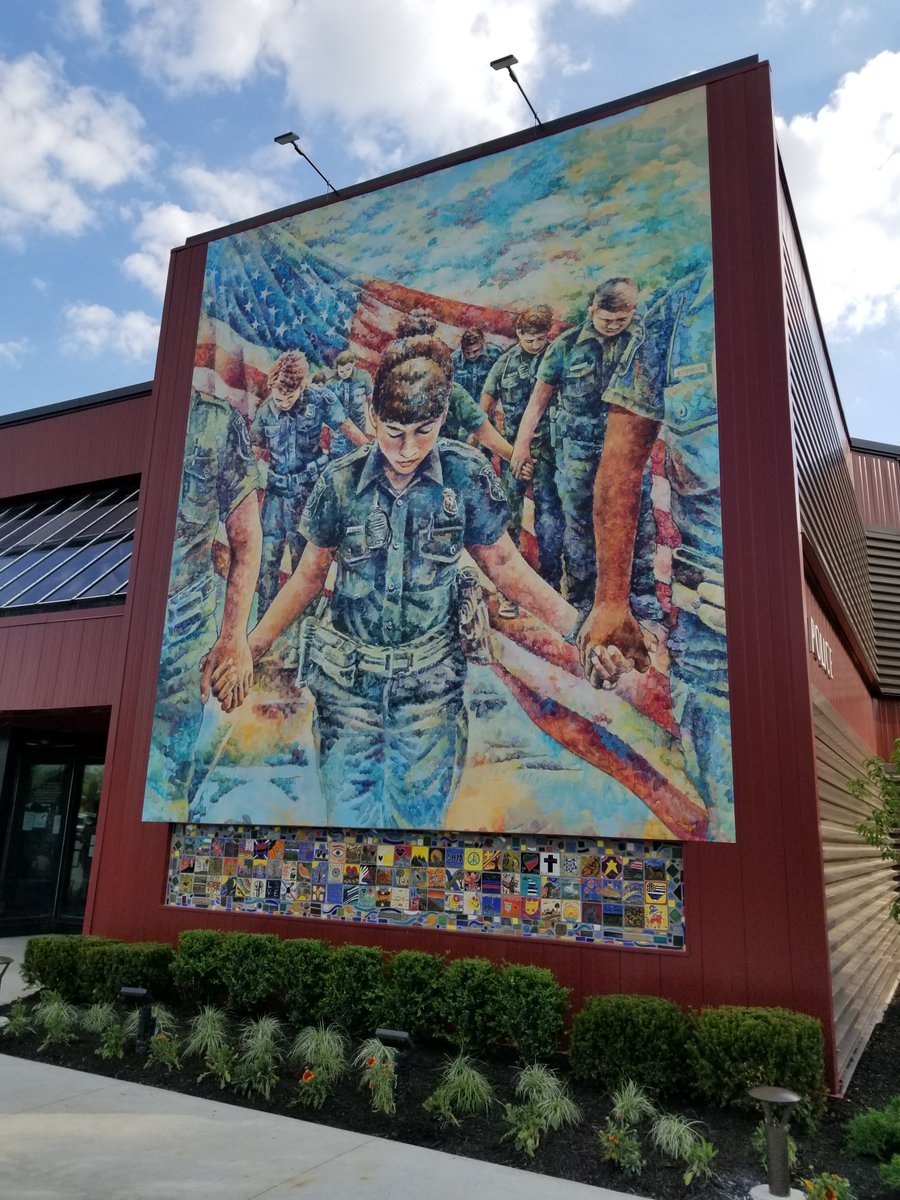
A piece of public art sponsored by the Detroit Institute of Arts (DIA) and installed at a local police station has fomented a wave of controversy among artists, activists, and others. Now, the artist behind the work wants it removed.
The artwork, a vinyl print pasted on the facade of a police department in the Detroit suburb of Sterling Heights, depicts a group of multi-racial police officers standing before an American flag, their hands locked and heads down. To Serve and Protect, as the piece is called, was commissioned three years ago from local white artist Nicole Macdonald through a DIA-sponsored public art initiative.
The work was unveiled at a press conference last Tuesday, June 1, with a ribbon-cutting ceremony attended by DIA’s deputy director. After images of the event began circulating online, artists including Kevin Beasley, Dawoud Bey, and Xaviera Simmons swiftly expressed their opposition.
“The museum is in the heart of one of the largest black cities in this country and this what ya’ll doing?” wrote artist Kevin Beasley in an Instagram post. “No major art museum should be funding, promoting and partnering with police departments to create propaganda that ignores and washes over the abuse of power the police exercise on a daily basis.”
The uproar comes after a year of protests that targeted museums’ little-known ties to police departments and, closer to home, alleged that the DIA and its director Salvador Salort-Pons were not doing enough to support staff of color or its majority-Black audience.
Further stoking the fire was the fact that two posts about the project on the DIA’s social media platforms were taken down days after their posting. A statement from the museum shared with Artnet News noted that the posts were “removed out of concern for individuals who were being personally targeted in the comments.”
DIA Staff Action, a group formed in opposition to Salort-Pons, called the mural “out of touch,” noting that it was unveiled the day before Breonna Taylor’s birthday. “We are disappointed but not surprised,” the group wrote on Instagram.
The mural came out of a partnership the museum has had with three nearby counties since 2012, when voters agreed to fund the institution with a dedicated property tax. In exchange for the funding—which comprises around two-thirds of the museum’s budget, according to DIA—the institution offers residents such benefits as public art programming, free admission, and school field trips.
According to the institution, the idea for the mural came from community members; DIA facilitated the project and selected the artist.
“Since 2018, the year this mural was painted, much has transpired in our country and we understand and respect that many members of our community are hurt and angered,” DIA’s statement said. “To support healing, we will continue investing in partnerships with community-based non-profits in the tri-county region led by and serving the BIPOC community.”
The Sterling Heights police department did not immediately respond to a request for comment on the reaction to the mural.
For her part, Macdonald, the artist, feels the work is no longer in line with her intentions. “If this piece is interpreted by the people that I care about as being a sign of brutality, then it should be removed,” she told Artnet News.
DIA paid her $6,000 to make a three-by-four-foot painting for the police department back in 2018, she said; the original was a “picture of peace” meant to “capture a moment of humility and introspection.”
Communicating through the museum, the department had asked her to make revisions to her original design, including adding more officers and an American flag in the background, she said. She obliged.
“That was a mistake, even back then,” said MacDonald, who self-identifies as anti-flag, anti-gun ownership, and pro-police reform. (She said she’s a proponent of the 23 tenants of reform put forth by the Detroit Will Breathe movement.) “I tried to make the best of a bad assignment.”
MacDonald didn’t hear from the museum again until last month, when a vinyl printout of her 2018 painting was installed on the police department’s facade—a process in which she had no part. “I would never get up and do that right now,” she said. “It’s against everything I believe in.”
In its statement, the museum said that the counties that support DIA with property tax money are “broad and diverse” and may have “priorities that differ greatly from others.” According to the most recent U.S. Census data, Macomb County, where the mural is located, is 80.3 percent white and 12.6 percent Black. (For comparison, metro Detroit is around 78 percent Black.)
When asked if the museum has the ability—or even the responsibility—to intervene should the community push for an artwork that some might deem offensive, a DIA spokesperson explained that the institution has put in place a “robust review process” that future proposals must go through, which would “culminate in approval from the host community’s city or township council.”